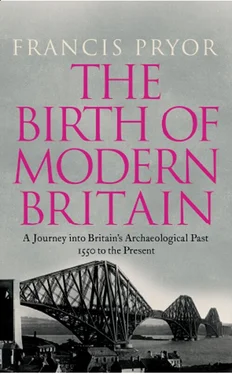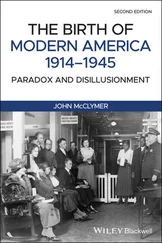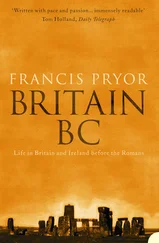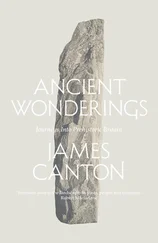The simple distinction between archaeology (dirt) and history (documents), although never so clear cut, begins to break down in post-medieval times when documents of every conceivable sort become near-ubiquitous: everything from newspapers to till-roll receipts. And much of this material can find its way into the archaeological record by way of local private archives that can survive for years in abandoned offices and dusty attics. Sometimes, however, archaeologists can reveal new documentary sources that the conventional wisdom believed had long been destroyed. It was the professional and amateur archaeologists working as part of the Council for British Archaeology’s Defence of Britain Project who discovered the paperwork drawn up in 1940 that ordered and duly paid for the building of the many concrete and brick pillboxes and other defences that can still be found in their thousands in unexpected nooks and crannies across Britain.
The Defence of Britain project shows how very important it is to keep archaeological research and survey up to date, because when it took place (1995–2002) huge numbers of Second World War defences were being destroyed as ‘eyesores’ – their historical importance notwithstanding. Some 20,000 records of military installations were made during those seven years and the most important of these were then given legal protection as Scheduled Ancient Monuments. 1 Without that project it would have been impossible to have drawn up a list of sites worthy of such protection. The same has since been achieved for Cold War sites. Would that something similar had been done before Dr Beeching wielded the axe that amputated the limbs of a once great railway network, whose Victorian stations, bridges and signal boxes now stand mouldering, while local people, stuck in traffic jams, have cause to regret their passing. The past is no less important just because it is recent. The real danger is that we take it for granted, like those wartime structures, because then we won’t realise that it has gone until it’s too late.
Of course, it’s very easy to take things for granted. Everyone today, even the most rich and powerful people in the land, has to cope with repetition: the daily drive to work or the royal flight; the walk to and from the station; regular trips to the parents-in-law, etc, etc. Each time we take a familiar journey we inevitably attach less and less value to the buildings and places we pass by. Whether we like it or not, familiarity does indeed breed indifference, if not actual contempt. Most people would agree that it is impossible to retain one’s enthusiasm for a building at quite the same level as when one first encountered it. But it doesn’t always have to be like this. In my experience archaeology can help keep one’s surroundings fresh and lively, simply by seeking out the links that tie the different parts of a particular place together.
Let’s take the case of a provincial town or city where we have a railway station built in the late 1860s, followed by relatively humble housing developments nearby in the early 1870s. By the 1880s streets of somewhat grander, mostly middle-class, villas start to appear, at which point, too, a large red-brick mock-Gothic church was also constructed. In the mid-twentieth century the area became less fashionable as the middle classes moved to new suburbs on the fringes of town. The church was then converted to a sound-recording studio and a new mosque was built on land that had once been railway marshalling yards. I won’t go on, but it’s the tales of development, setback and change, only slightly hidden away in the layout of our towns and villages, that still have the power to excite me. But for how long will it be possible to reconstruct such stories from dry bricks and mortar? Increasingly the deep foundations of modern developments devour all before them, leaving nothing in their wake for future archaeologists to puzzle over, admire and enjoy.
So those of us with an eye for such things are already looking around at our surroundings, wondering what will come under threat next. And here we are faced with the dilemma that must confront anyone whose job is to predict such things, because almost by definition people in the future will decide that we got it wrong: that it was a mistake to Schedule * multi-storey car parks when it was shopping malls that were then rapidly redeveloped and promptly vanished.
So the answer is probably to cast the net wider and protect whole areas of towns or rural landscapes, rather than individual sites or buildings, if our attempts to second-guess posterity are to have any chance of success. 2 This is already being done in the so-called Conservation Areas and Historic Cores of certain historically important towns and cities; furthermore, designated Areas of Outstanding Natural Beauty can help to protect well-known tracts of rural landscape. But inevitably such designations must favour the chocolate-box view of landscape and townscape. I can’t see anyone choosing to put forward the flat, treeless landscape where I have chosen to live, even though I personally regard it as life-enhancing and profoundly beautiful. The same could be said for many suburbs or industrial conurbations, which may well be recognised as important in two hundred years’ time. The other problem, of course, is that such protection can then put a break (it’s often termed ‘planning blight’) on commercial redevelopment and the area then starts to slip into economic decline – a process that can also be ‘assisted’ by those with vested interests.
My approach to archaeology has always been based around the landscape and by that I mean the physical setting for a particular site or monument. So it makes no sense to try to understand the mysteries of Stonehenge without thinking about why it was placed on Salisbury Plain, and why it is surrounded by hundreds of burial mounds and other sacred places, some of which are actually much earlier than the famous Stones themselves. By the same token we can soon come to understand why Manchester and the towns of north-west England became an early centre of the textile trade when we know that this area had been producing woollen fabrics since the later Middle Ages, so was able to take advantage of, or ‘add value’ to, the rapidly developing trade in cotton between Liverpool and the southern United States. So if we are to understand the context of the nineteenth-century cotton industry in the North West, its economic setting should also include Louisiana and Georgia, and latterly the effects of the American Civil War on the supply of raw materials. Similarly, it would be impossible even to think about the hugely important ceramic industry of the area around Stoke-on-Trent without also considering where these millions of plates, mugs, teapots, cups and saucers were traded.
In prehistory stone axes and bronze implements could be traded over long distances – three to four hundred miles was not uncommon – but the amounts were still small. By the eighteenth and nineteenth centuries, trade had become global and the quantities involved were huge: thus pottery exports were measured in tons and improvements in ship capacity meant that distance had almost become irrelevant. So archaeology and those who practise it have had to develop new techniques and approaches if they are to throw genuinely new light on the complexities of the historic past. There is close collaboration, for example, between American archaeologists working on colonial-era settlements in Virginia and New England, and their colleagues in the English Midlands, where many of the exported goods were manufactured. One might perhaps expect that the flow of information was entirely from east to west, but in actual fact the American sites have produced results that have caused considerable surprise in Britain. Archaeology has a wonderful ability to prove the best-based predictions wrong.
Читать дальше












